There is nothing more comforting when winter comes around than a heaping bowl of fabada asturiana, a delicious white bean and chorizo stew from Asturias, a province in northern Spain. This easy dinner recipe is worth saving and making on a regular basis!
If you're looking for other cozy Spanish stews, make sure to try these recipes for squid and potato stew and cod and potato stew.
Introduction
For years, I was hesitant to try fabada asturiana, as I thought it took hours to prepare--but was delighted to discover that it's a winter comfort meal ready in only 30 minutes!
This fabada recipe features the "holy trinity": morcilla, chorizo, and tocino, often conveniently available in one package here in Spain. Using pre-soaked (canned) beans or fabes makes the prep even faster!
Ingredients

Wondering what ingredients you need to make this comforting Spanish fabada recipe? Fortunately, you only need 12 basic ingredients. Let's talk about the most important ones!
- Fabadas (White Beans): These giant beans are sold canned or dried here in Spain, but it's definitely faster and easier to use good quality canned ones.
- Meats: You'll need to use a mixture of spicy and sweet (not spicy) chorizo, Spanish blood sausage (morcilla), and cured pork belly (pancetta or tocino).
- Veggies: Using a mixture of onion, carrot, potato, and garlic brings flavor to this hearty stew.
See recipe card for full information on ingredients and quantities.
Substitutions
- Can't find fabadas? Use cannellini beans instead. They're smaller than fabadas, but have the same flavor and texture.
- Tocino (Bacon): If you can't find a package of tocino, don't worry! This is just the Spanish name for bacon, so it's easy to find a substitute.
- Chorizo: If you can't find semi-cured, that's okay. If you're using raw chorizo, you'll need to brown it before adding to the stew.
How to Make Fabada Asturiana
If you’d like to see the full ingredients and instructions, scroll to the bottom of the post for the printable recipe card.
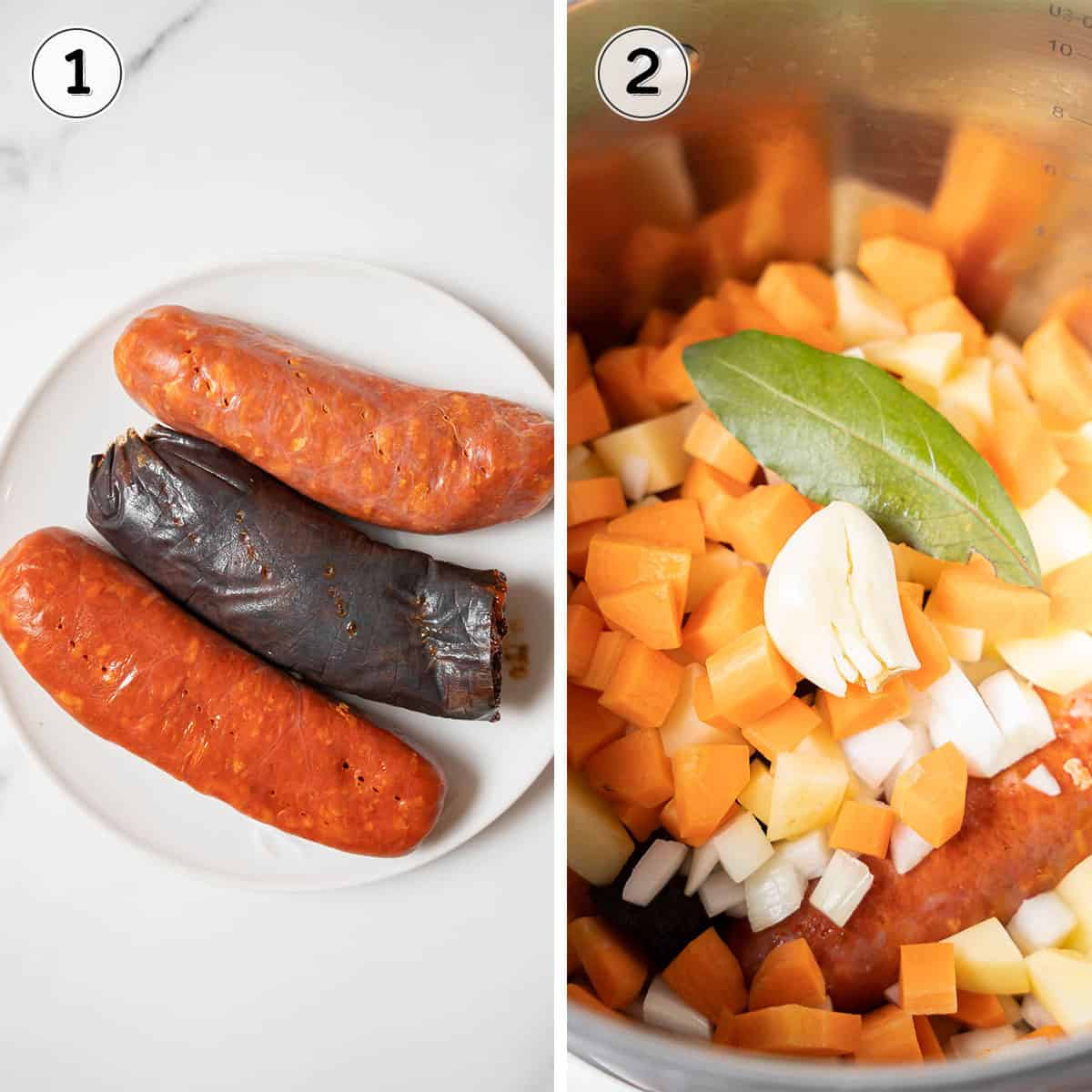
- Poke the casings with a fork to keep the sausages from bursting. (If you're using completely raw meats, you'll need to brown them at this stage.) (image 1)
- Put the meats, vegetables, garlic clove, and bay leaf into a pot. (image 2)
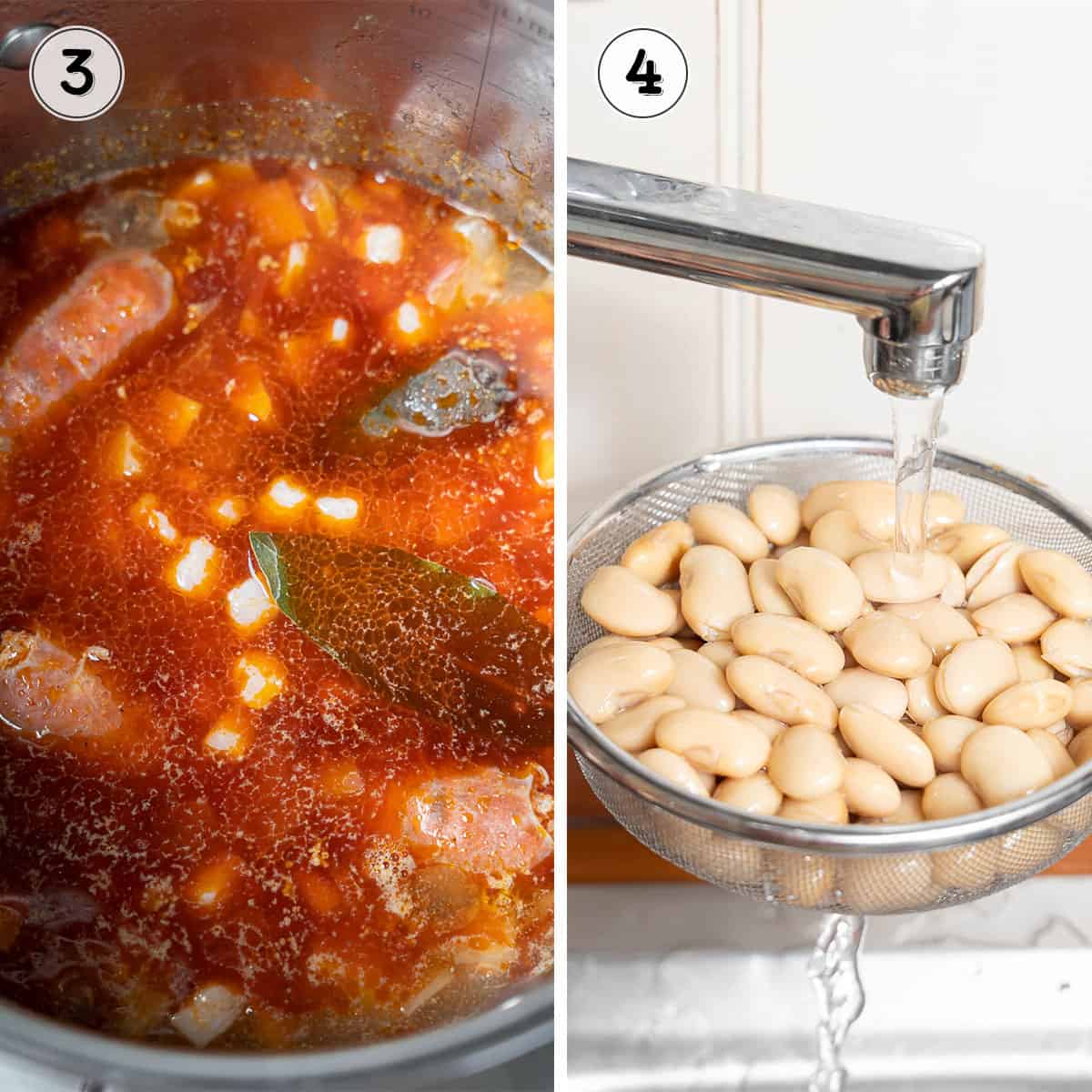
- Cover the ingredients with water (or ham stock) and bring to a boil, then simmer for 15 minutes. (image 3)
- Drain and rinse the beans in a strainer and set aside. (image 4)
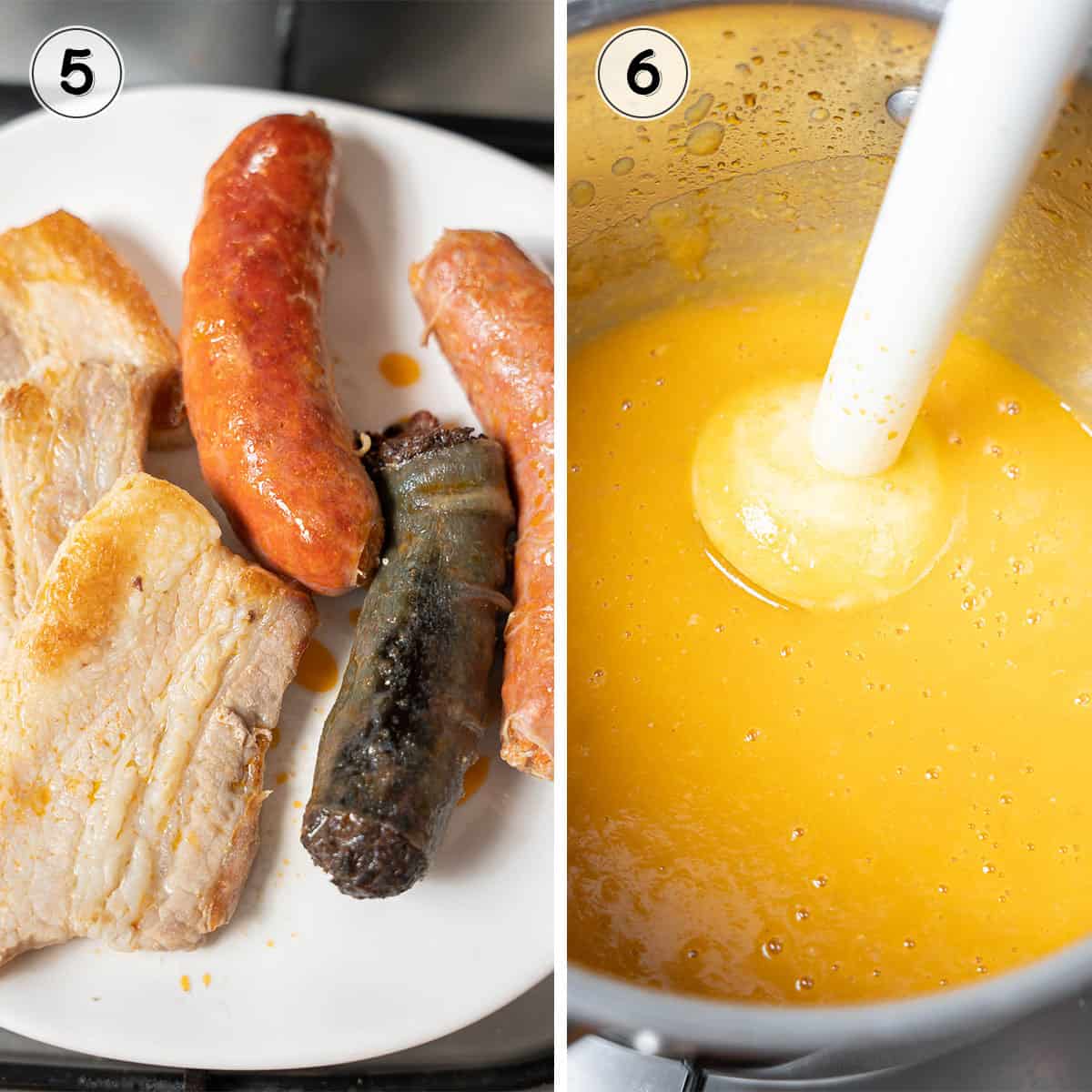
- Take out the meats and set them aside on a plate. Discard the garlic clove and bay leaf. (image 5)
- Purée the cooked vegetables into a thick soup and season with salt. (image 6)

- Cut the meats into bite-sized pieces, then add the meat and beans to the stew and heat through for about 5 minutes. (image 7)
- Enjoy immediately with a slice of hearty bread for a cozy dinner! (image 8)
Recipe FAQs
Fabada asturiana is a stew from northern Spain. It's made from a mixture of vegetables simmered with chorizo and blood sausage, then puréed and cooked with the fabada beans.
Cannellini beans are a great substitute for fabada beans! Although these beans are smaller than fabada beans, they have a similar flavor.
Unlike French cassoulet, fabada is quick to prepare, and has a smokier, richer flavor from the Spanish chorizo, pancetta, and morcilla (blood sausage).
Serve
This fabada asturiana is a wonderful dinner recipe for cold winter nights! I recommend serving it with slices of hearty bread for a special dinner.
If you're looking for other Spanish recipes to serve with this fabada, try patatas aliñadas (Spanish potato salad) or ensalada mixta, and a dessert of arroz con leche for a heathy and cozy dinner!
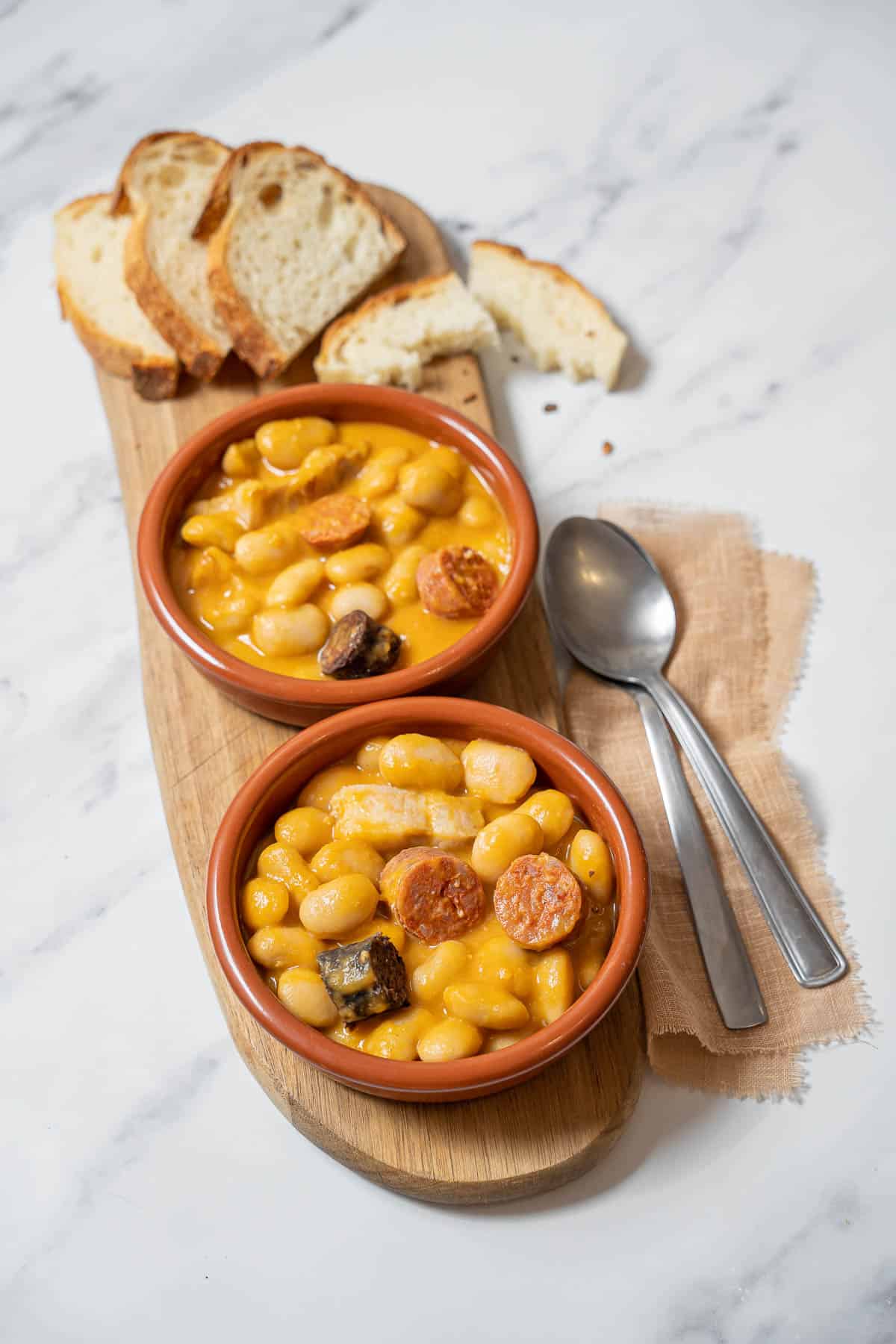
Expert Tips
- The semi-cured meats that we have in Spain only need light cooking in the stew before eating. However, if you can only find raw, fresh meats, you'll have to sear them before adding to the stew.
- Can't find fabada beans? Substitute with cannellini beans.
- Use ham stock instead of water for extra flavor.

Fabada Asturiana (White Bean and Chorizo Stew)
Ingredients
- 1 15 ounce can large white beans drained and rinsed
- 1 small link sweet semi-cured Spanish chorizo
- 1 small link spicy semi-cured Spanish chorizo
- 1 small link semi-cured Spanish blood sausage (morcilla)
- 4 ounces pork belly (pancetta or tocino)
- 1 large carrot peeled and diced
- 1 small potato peeled and diced
- 1 small onion chopped
- 1 bay leaf
- 1 clove garlic smashed
- 2 ½ cups water or ham stock
- salt to taste
Instructions
- If using the semi-cured meats, poke the sausages with a fork so that the casing doesn't burst once cooking. If you're using raw meats, brown them at this stage.
- Put the meats and vegetables into a large pot, along with the smashed garlic clove and bay leaf. Cover the ingredients with water (or stock) and bring to a boil, then simmer for 15 minutes, or until the veggies are tender.
- Take out the meats and put on a plate, then discard the garlic clove and bay leaf.
- Blend the vegetables and broth to create a thick soup. Season with salt if desired.
- Cut up the meats into bite-sized chunks and add them back to the broth. Add the rinsed beans and cook over a slow heat for 5 minutes.
- Enjoy immediately, or serve later for even more flavor!
Notes
- The semi-cured meats that we have in Spain only need light cooking in the stew before eating. However, if you can only find raw, fresh meats, you'll have to sear them before adding to the stew.
- Can't find fabada beans? Substitute with cannellini beans.
- Use ham stock instead of water for extra flavor.
Nutrition
Photography by Giulia Verdinelli


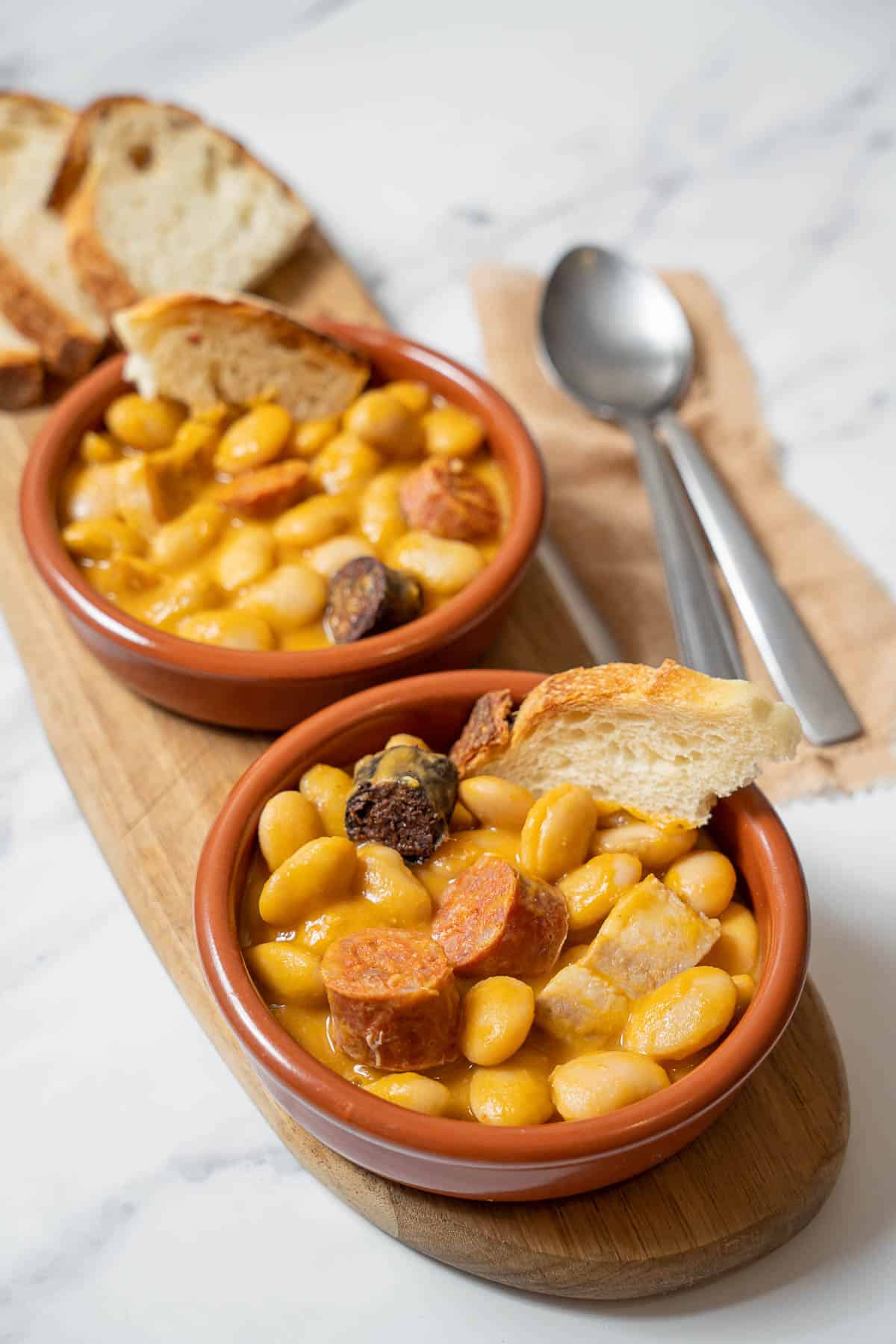
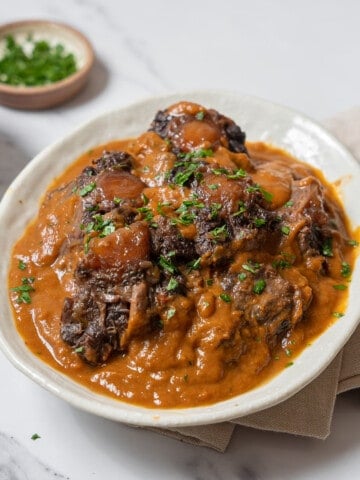
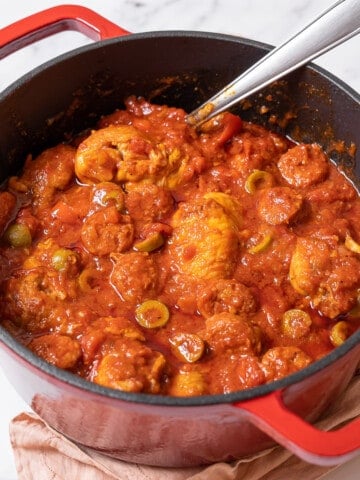
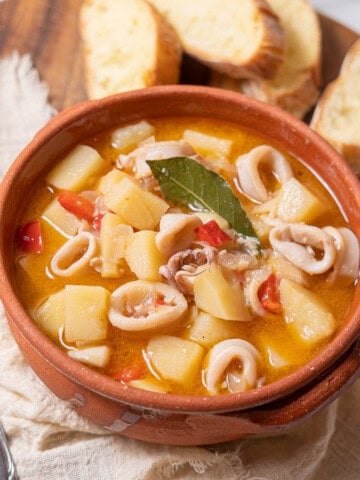
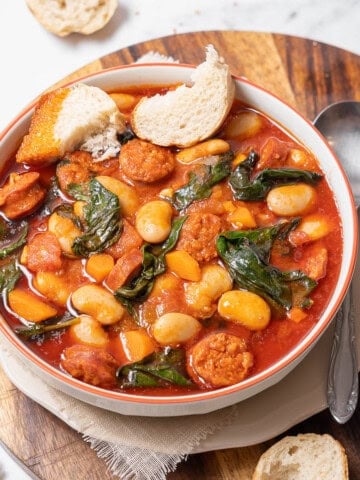

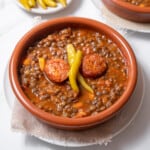
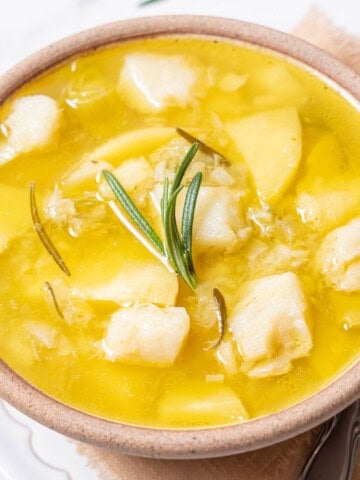
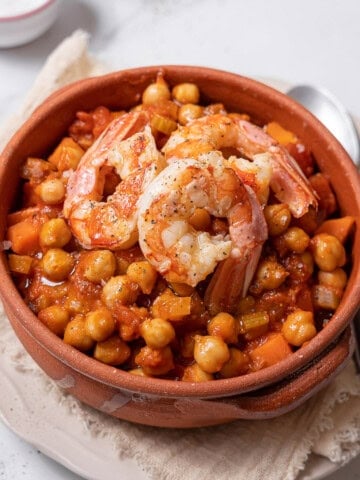
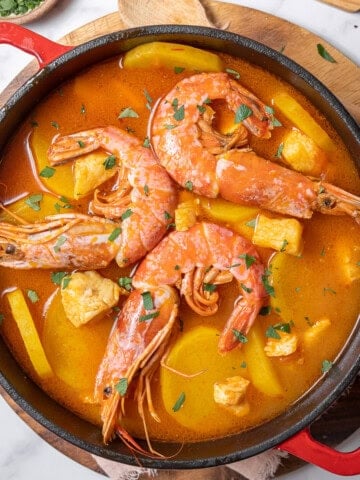
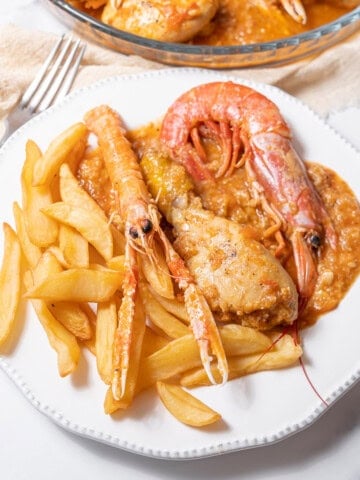
Rodney Galea
A real go to in cooler times. My wife is not keen on chorizo so I go half and half with torunsca sausage (Polish country sausage) - not really Spanish I know - she has one & I have the other. Thank you for this recipe.
Dave
I just made a fabada 2 days ago, absolutely one of my favorite dishes - I don´t add carrot or potato but may give that a try the next time. I also add spicy paprika rather than dulce (I love spicy food).
Jose
Sorry Lauren Aloise, I put here, a video of the fabada of the restaurant from Asturias, which won in 2011, 2017 best fabada in the world,.
https://www.casachema.com/noticias-blog/136-la-mejor-fabada-del-mundo-en-where-is-asturias
Jose
Hoy, al existir los congeladores, no hace falta usar fabas secas, que hay que poner a remojo el día anterior, se pueden recoger de la planta y no dejar secar, sino congelar
Today, as there are freezers, there is no need to use dried fabas, which must be soaked the previous day, they can be collected of the plant and not left to dry, but frozen
La fabada nace a finales del siglo XIX, hay una teoria que dice que nace al quitarle condimentos al pote asturiano (en Asturias pote de berzas).
The fabada was born in the late nineteenth century, there is a theory that says it was born by removing condiments Asturian pote (in Asturias pote of berzas).
Es curioso que tanto el pote asturiano (actual) y la fabada no existiría sin el descubrimiento de América.
It is curious that both the Asturian pot (current) and fabada would not exist without the discovery of America.
http://historiasjasm.blogspot.com.es/2016/05/cuate-prestome-lo-que-enviaste.html
I'm sorry it's in Spanish
I apologize by my English (I don't speak English)
Lauren Aloise
Gracias por los hechos interesantes Jose! Me encanta la fabada 🙂